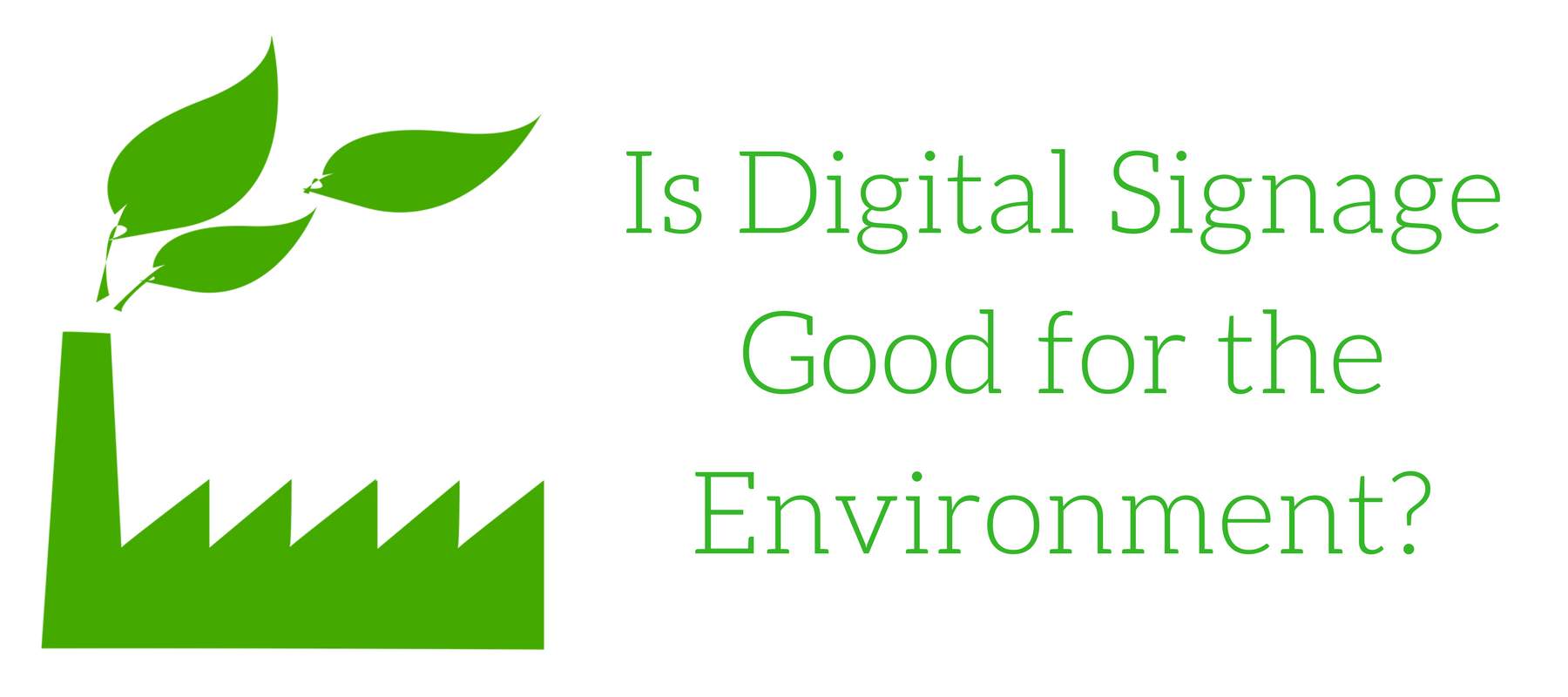
Is Digital Signage Good for the Environment?
Sustainability should be a key consideration for any business or organization. It benefits the environment and presents cost-saving opportunities—and in many cases, access to government incentives for adopting eco-friendly practices. With that in mind, it’s natural to ask: is digital signage an environmentally responsible choice?
This question becomes even more important if your facility aims to earn or maintain a Leadership in Energy and Environmental Design (LEED) certification. Let’s explore how digital signage stacks up regarding environmental impact and energy usage.
Is Digital Signage Energy-Efficient?
At first glance, digital signage may not appear eco-friendly. It requires a computer to create the content and a screen to display it, both of which use electricity. But modern technology has come a long way. Today’s LED displays and energy-efficient computing devices—often used in manufacturing digital signage—consume up to 90% less power than their older counterparts. Gone are the days of bulky tower PCs and power-hungry plasma screens.
LED displays, in particular, are designed to last longer and can be recycled more efficiently than older technologies. They’re engineered with energy efficiency in mind, making them a solid option for environmentally conscious businesses.
To put it in perspective:
Imagine running a 40-inch LED display with 35 watts of power, operating 24/7. At an average U.S. energy cost of $0.12 per kWh, that screen would cost about $3.07 per month to operate. Putting the screen into standby mode during off-hours—like evenings or weekends—’ll reduce that number even more.
You can run your own energy cost estimates using EnergyUseCalculator.org to understand your exact usage better.
Better Communication, Less Waste
While digital signage does consume energy, it often delivers a more efficient and effective communication experience. Unlike static paper signs, digital displays are dynamic, eye-catching, and easy to read. That means your message gets noticed—and remembered.
Not getting the results you expected? You can quickly troubleshoot and improve messaging by avoiding these four most common digital signage mistakes.
When your system is managed with a cloud-based content management system (CMS) like Rise Vision, updates can be made remotely—no need to visit each display in person. This reduces fuel use, travel emissions, and time spent on site changes, making your signage strategy even more eco-friendly.
How to Make Sure Your Digital Signage is Green
Technology is getting greener, but your setup and habits still play a big role in reducing energy consumption. Here are three practical steps to ensure your digital signage system stays as environmentally friendly as possible:
- Choose Energy-Efficient Displays
Most modern digital signage displays meet Energy Star standards, but some models outperform others. Energy Star releases an annual list of the most efficient screens, so make sure you do your research before purchasing. - Use Scheduled Playlists and Display Downtime
Avoid running your digital signage during off-hours or when foot traffic is low. If no one is around to see it, schedule the screen to go dark. This simple step cuts energy waste dramatically - Enable Display Control Features
Rise Vision includes a “Display Control” function that lets you automate on/off times based on your schedule. Use this feature to ensure screens only operate when needed—especially helpful for schools, offices, and retail environments.
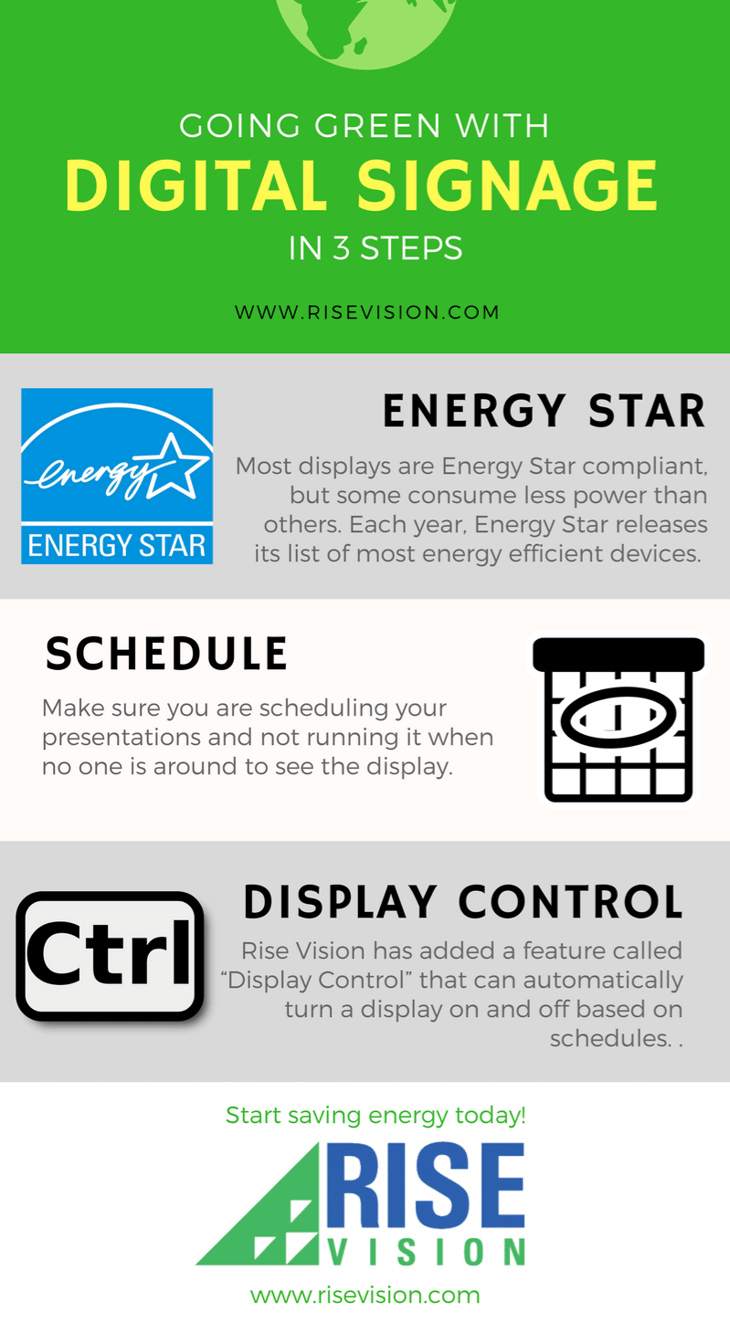
Our Creative Team has also created several free digital signage and green templates for schools and companies that want to show their viewers that they care about the environment.
More From Our Blog
-
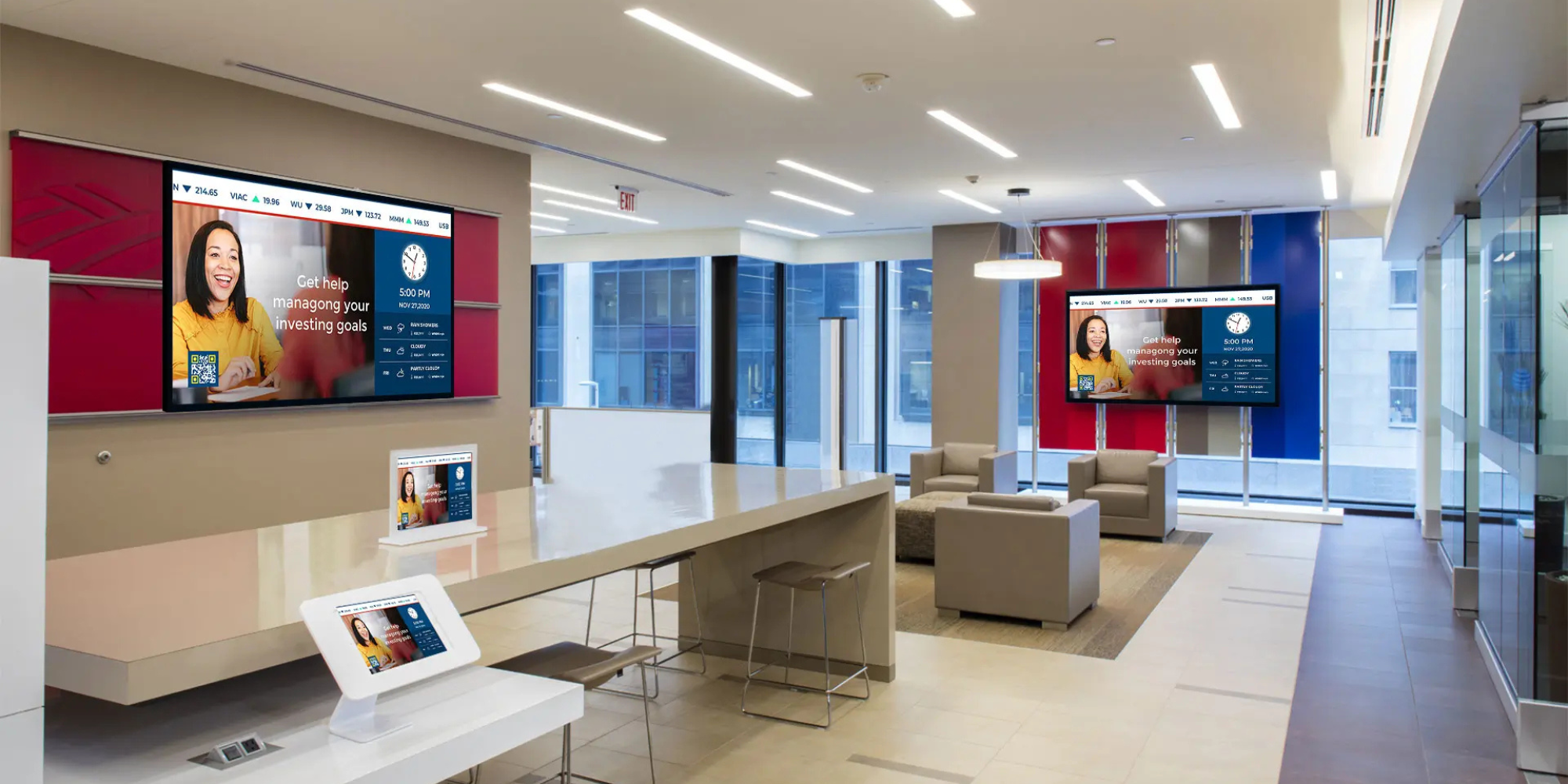
How Effective is Digital Signage?
Digital signs are revolutionizing. That's the short answer. But if you're trying to convince leadership to invest in screens for your school hallways, hospital waiting areas, or manufacturing floor,[…]
Read More -
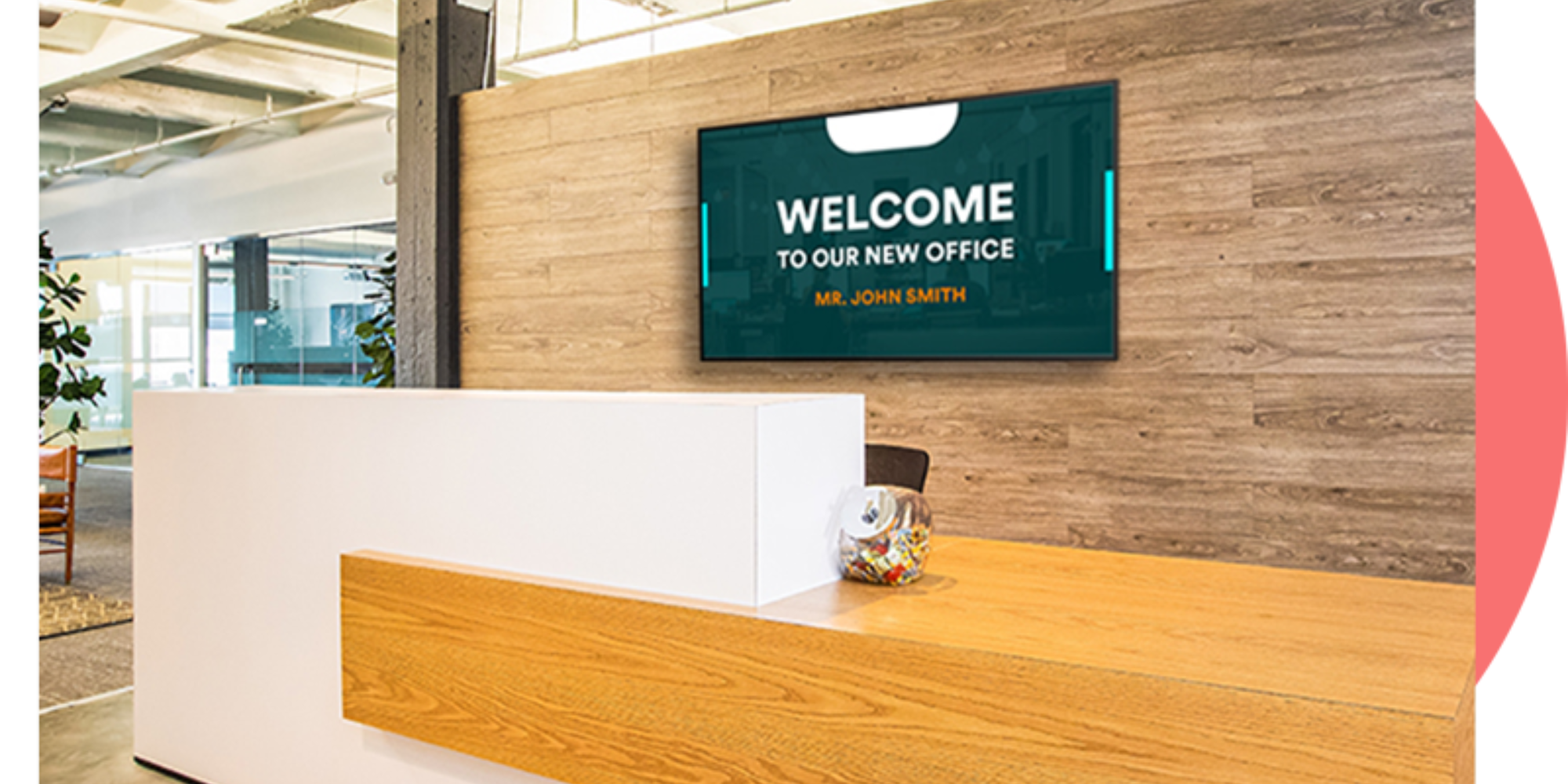
10+ Office Welcome Sign Ideas
Getting a welcome sign on your office display shouldn't take all afternoon. Rise Vision makes it pretty straightforward: pick a template, swap in your logo, and push it to your screen. Done. The[…]
Read More -
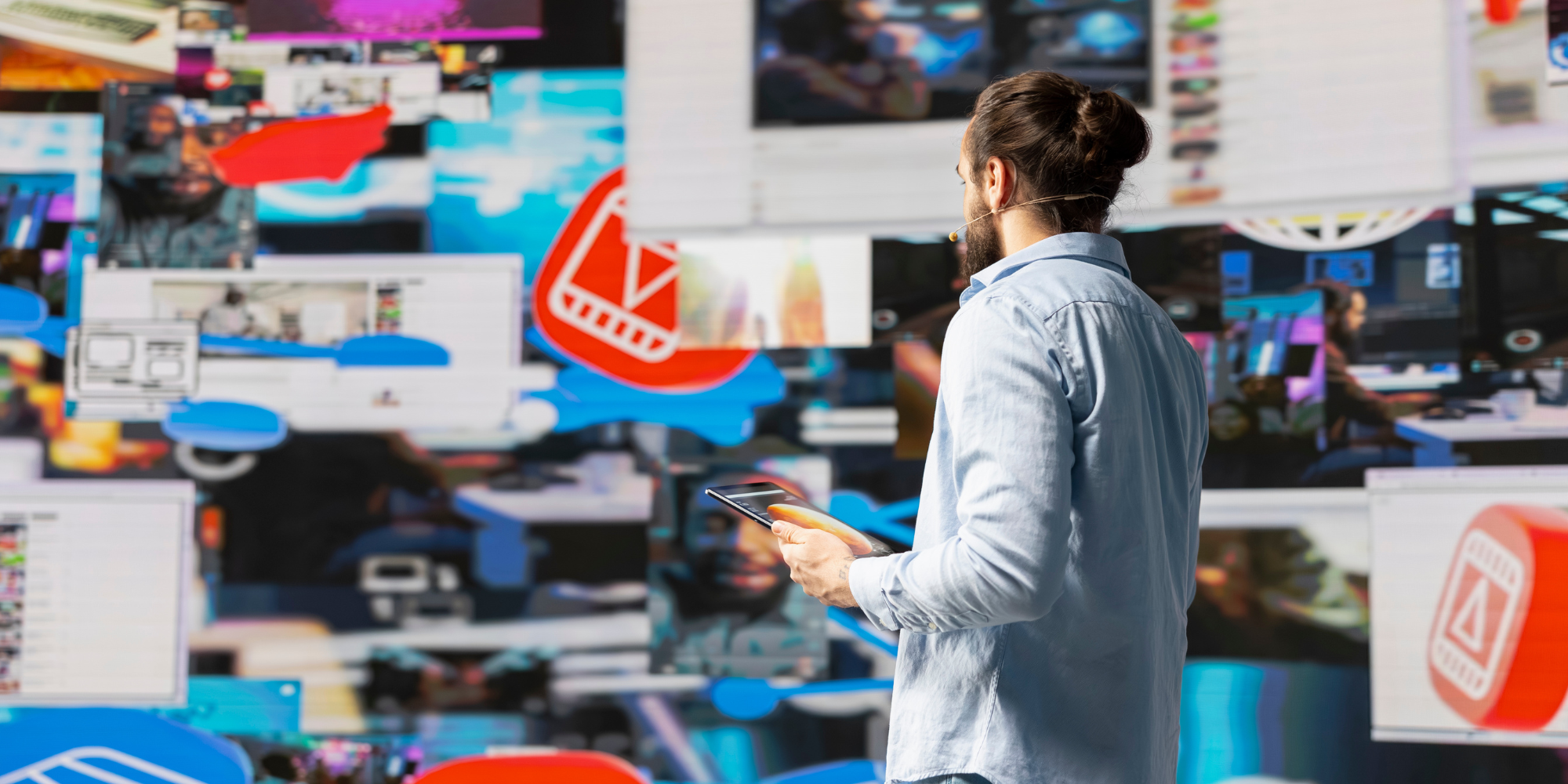
Top Trends in Digital Signage Display Technology for 2025
Digital signage technology is evolving rapidly, with new innovations emerging every year. In this rapidly evolving landscape, businesses must adapt quickly to keep up with the latest advancements in[…]
Read More
Keep Your Displays Interesting – Pick New Templates Every Week!
Every week, we send template recommendations that will make you look great and improve your audience experience. And the best part, they save up to 16 hours of content creation time every week!
12,300+ Organizations Trust Rise Vision, You Can Too
Schedule a Free Demo
You deserve the #1 all-in-one platform for digital signage, screen sharing, and emergency alerts.




































